The Key Is Stability
Stability is the act of preventing excessive movement at a joint in order to prevent injury to muscles, tendons and ligaments. Our ankles and hips are extremely mobile and demand sufficient stability to handle running on rugged terrain. If you have any weaknesses in your ankle/hip stabilizer muscles, you will likely be prone to an injury at some point in your trail running career due to gait deficits that overstress the low back, hip, knee and ankle.
The following exercises are designed to help bulletproof your core, hips and ankles in order to take on any challenges the trail may throw your way! Exercises should be performed 3-4 times a week.
Stability Exercises for Trail Runners
Single-Leg Dumbbell Romanian Deadlift– for lumbar/core, hip and ankle stability
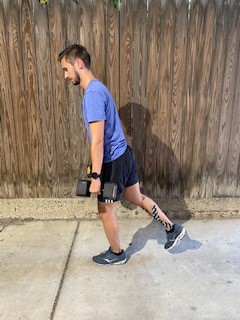
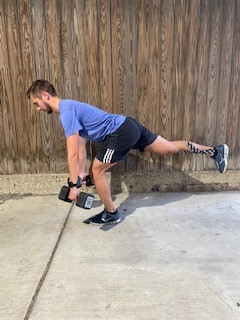
- Stand on one leg with your knee slightly bent, holding two dumbbells (you can do this without dumbbells if you don’t have any.)
- Keeping your spine straight, slowly lift one leg up while lowering your hands to the ground, then slowly stand back up.
- Repeat for 3 sets of 10 repetitions.
Single-leg Heel Raise–for ankle stability
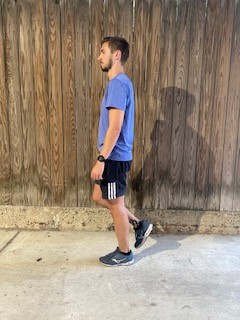
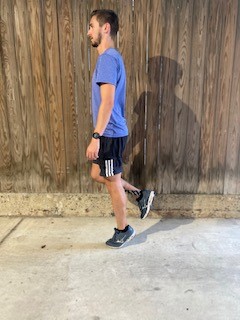
- Put all your weight on one foot.
- Slowly raise your heel off the floor, and then slowly lower back down. For an added challenge, try not to hold on to anything when you do it. If it is challenging to maintain balance during this exercise, perform near a chair or other stable surface.
- Repeat for 3 sets of 10 repetitions on both sides.
Single-Leg Resisted Hip Abduction–for hip and ankle stability
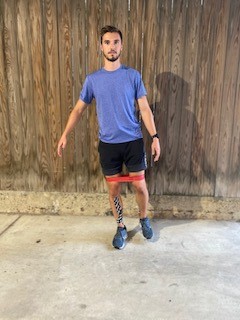
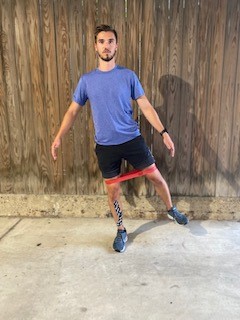
- Attach an exercise band to your leg. Then, stand on the opposite leg.
- Lift your leg out and to the side, then slowly let it return to the starting position. If it is challenging to maintain balance during this exercise, perform near a chair or other stable surface.
- Repeat for 3 sets of 10 repetitions.
Modified Side Plank + Hip Abduction–for hip and lumbar/core stability
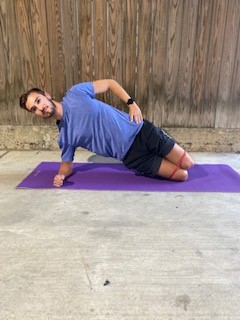
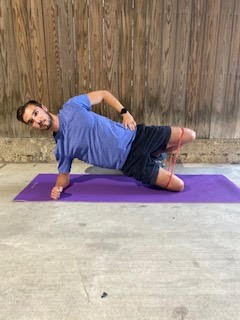
- Start off in a modified side plank position, making sure your shoulders are level with hips and that your shoulders are relaxed.
- Squeeze your glutes as you raise your knee up to the ceiling while keeping your feet together. Return slowly back to the starting position.
- Repeat for 3 sets of 10 repetitions on both sides.
Standard Plank–for lumbar/core stability
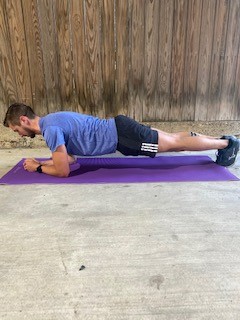
- Make sure your hips don’t sag toward the ground or pike up to the ceiling. Your shoulders should be level with your hips.
- Hold for 1 minute and repeat up to 3 times.
Extra Credit:
Keep the following pointers in mind for when you hit the trails to help keep yourself healthy:
- Remember to use a good pair of trail running shoes in order to help stabilize your ankle when running on rough terrain.
- Run on groomed, marked trails.
- If you roll your ankles often, it might help to use athletic tapes to enhance ankle stability.
- Hydrate often.
Consult an Expert to Help Design a Training Plan
A major finding of one study of 40 ultramarathon trail runners by Malliaropoulos & Tsaklis was that, “An individualized training program (schedule) designed by a professional was found to be associated with less injury compared with an empirical training schedule (based on personal experience) suggests having a training program designed by professionals as a protective factor against injury.2” A physical therapist is a qualified professional for making such a program. Schedule a free assessment with one of our endurance specialists today to help prevent and treat injury on and off the trail!
The Athletico blog is an educational resource written by Athletico employees. Athletico bloggers are licensed professionals who abide by the code of ethics outlined by their respective professional associations. The content published in blog posts represents the opinion of the individual author based on their expertise and experience. The content provided in this blog is for informational purposes only, does not constitute medical advice and should not be relied on for making personal health decisions.
References:
1. Oosthuizen IA et al. “Common Ultramarathon Trail Running Injuries And Illnesses: A Review.” International Journal of Medicine and Medical Sciences, 11(4), April 2019, pp. 36-42.
2. Malliaropoulos N & Tsaklis PV. “Prevalence of Injury in Ultra Marathon Trail Running.” Human Movement, 16(2), June 2015, pp 52-59.

 width="900"
height="356"
>
width="900"
height="356"
>
